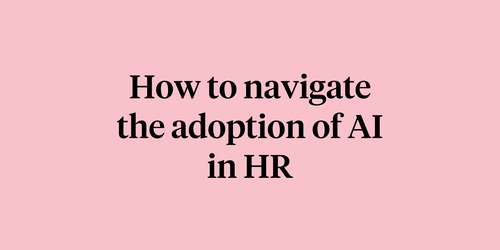
How inequity is showing up in virtual work environments

Written by

Founder and CEO of ModelExpand

Head of Diversity, Equity and Inclusion, Frontier Communications
Though equity is a term frequently used in Diversity and Inclusion work, it often feels like a buzzword that is rarely understood or defined. When racial injustices and a global pandemic are at the center of national discourse, organizations are being forced to confront questions of equity and equality. In this piece, we provide concrete examples of how the new realities of the remote world affect people differently and, most importantly, what managers can do about it.
Equity vs. equality
Let’s begin with key terms crucial to building inclusive remote work environments: equality and equity. What do these terms mean, and how do these meta-level conversations affect our micro-level work environments?
- Equality is typically defined as treating everyone the same and giving everyone access to the same opportunities. Equality is about sameness.
- Equity refers to the policies and practices that account for the fact that we do not all have the same circumstances or barriers and thus may need different kinds of support. It focuses on creating conditions that eliminate barriers and advance processes to ensure fairness and justice. Equity is about fairness.
As a manager, we often aim to provide our team members similar access to resources and opportunities. With this approach, it makes sense to think that if everyone has the same access to opportunities, everyone has the same opportunity to perform at their best, right?
Not exactly. Equity highlights the fact that two of your team members may be coming into the same virtual work environment with a different set of circumstances. To provide equitable opportunity, they may need different kinds of support.
A lens toward equity helps managers fill in those gaps so that everyone can “start” from the same place. Though the need for equity is not new, COVID-19 has highlighted the urgency and importance of understanding what equity in the workplace looks like. Now more than ever, it is an organizational imperative that managers learn how to meet the needs of all team members – not just those from majority groups.
So let’s take a look at a few of the ways we’re seeing inequity show up in the virtual environment.
The impact of COVID-19 on equity
The effects of COVID-19 affect different people differently, and the implementation of equitable practices by leadership is critical in ensuring all employees can fully engage in their work. Existing research suggests this pandemic disproportionately affects (including, but not limited to):
- Underrepresented racial and/or ethnic minorities
- Parents
- New hires
- Those with mental and physical challenges
- Women
For example: Because of traditional gender roles, home chores, and responsibilities tend to disproportionately fall on women. Even if a heteronormative family has two parents at home right now, research has shown women are picking up more household responsibilities than ever before. This is almost as much as 20 hours/week – equivalent to another part-time job!
Further, Black and Latinx Americans are 3 times as likely to know someone who has died from coronavirus. This current pandemic exacerbates existing mental health conditions that can have lasting psychological effects. Simply put, specific populations are showing up to the workplace differently, and managers need to put specific actions in place to address the resulting inequities.
Strategies to combat inequity in the workplace
Below, we discuss how structural inequalities and workplace inequities are heightened during the COVID-19 pandemic, and a few strategies managers can implement to combat them. Though these are just a few examples, we hope they will provide the first step for managers to begin leading with a lens toward equity.
Meet prior expectations with empathy
Some people are dealing with the inconveniences of being at home, while others have the stress of taking care of/worrying about other family members.
Solution: Flexibility is critical. Create an environment where, if someone needs to reschedule, it is met with empathy and understanding.
Example: ModelExpand creates deadline buffers as we understand things come up unexpectedly. UT Southwestern Medical Center offers childcare and eldercare at reduced costs for employees and provides webinars on how to work remotely from home.
Ensure access to technology
Not everyone at a company makes the same amount of money or has the same financial responsibilities. Higher-ups may not even be aware of essential things that others need. Does everyone have access to mics, laptops, solid internet, headphones, etc.?
Solution: Provide a stipend/budget to ensure everyone has what they need to participate comfortably in virtual meetings from a technology perspective.
Example: Companies such as Shopify, Indeed, Buffer, and many more are helping to pay for their employees’ home-office setup due to COVID-19.
Neutralize power dynamics with virtual backgrounds
Status can be signaled based on someone’s background, and research shows that status can affect how we assess individual competency. When decisions or meetings are made, backgrounds can unconsciously affect power dynamics.
Solution: Encourage blurred, neutral, or virtual backgrounds across the board. Here are a few to get you started and to share with your team.
Example: Some companies are using virtual backgrounds as a way to bond instead of separate. Various companies have encouraged virtual backgrounds, and organizations such as the Human Rights Campaign are providing inclusive backgrounds.
Audit your virtual get-togethers
If you’re going to host workplace activities or team-building events, consider the money or time it requires. Something as seemingly benign as a “Peloton competition” or “cooking competition” can put an extra strain on some folks. Not everyone can afford certain workout options, and paying for the many ingredients or devoting time to make a meal while caring for others at home can be straining.
Solution: Encourage virtual events that aren’t heavy on finances or time. Consider keeping these events to work hours in case people have other responsibilities.
Example: Anaplan offers virtual coffee breaks and celebrations of employee achievements, both professional and personal, to keep people connected during this time.
Embrace various communication methods
If someone is sharing their home – with a partner, roommate, or family member – it can be hard to get a quiet room to themselves. What’s even more challenging is if two people have meetings simultaneously. Though we know this may be the case, many managers still expect people to engage fully in meetings as usual.
Solution: Embrace the chat functions and online collaboration tools. If your team is in a virtual meeting with multiple people, emphasize using chat since there is an understanding that not everyone can speak. Similarly, utilize tools like Asana and Basecamp so collaboration can continue without a meeting every time.
Example: Asana has encouraged communication contracts with their teams. Based on personal situations, communication preferences will look different for each person, so it’s helpful to have the conversation upfront. It also normalizes the idea that people have different preferences and allows them to not feel different or isolated for certain needs.
Rethink performance reviews
For most organizations, performance evaluations are essential to performance management. However, goals and organizational priorities are likely to change during a pandemic. Moreover, employees are dealing with unprecedented changes and stresses. During times like this, running performance reviews, as usual, may not make sense, as employees and leaders alike are contending with unforeseen circumstances.
Solution: Rethink performance expectations and discuss how leaders and managers can adapt their expectations to consider unique circumstances.
Example: Facebook decided to forgo performance reviews during COVID-19 as they know people deal with different stressors at home. At the same time, they’re providing bonuses and health leave.
Changing company cultures for the better
The reality is that certain groups have more responsibilities and obligations than others. However, companies can be sure to retain top talent and ensure loyalty if they show they care, as opposed to just saying it. Taking into consideration that people come to work with different circumstances is a large component of DEI work that should be embedded into management styles now and beyond this current crisis. Indeed, we hope the work we can do to advance equity now can help us create better workplaces in the future.


